Spotlight the change: place ‘before’ photos/signs where you can see the resulting abundance ‘after’ planting water and life
People see that dramatic positive change is possible when—after we implement water-harvesting plantings and restoration efforts—we post signs with photos documenting conditions before we planted regenerating abundance.
Place the signs where the ‘before’ photos were taken, then people can keep returning, stand where the original photographer stood, and see for themselves the effects of various interventions/collaborations.
As it so seldom rains in our desert environment, it is great to also have photos of how the water is captured, so folks can understand, whatever the weather when they visit.
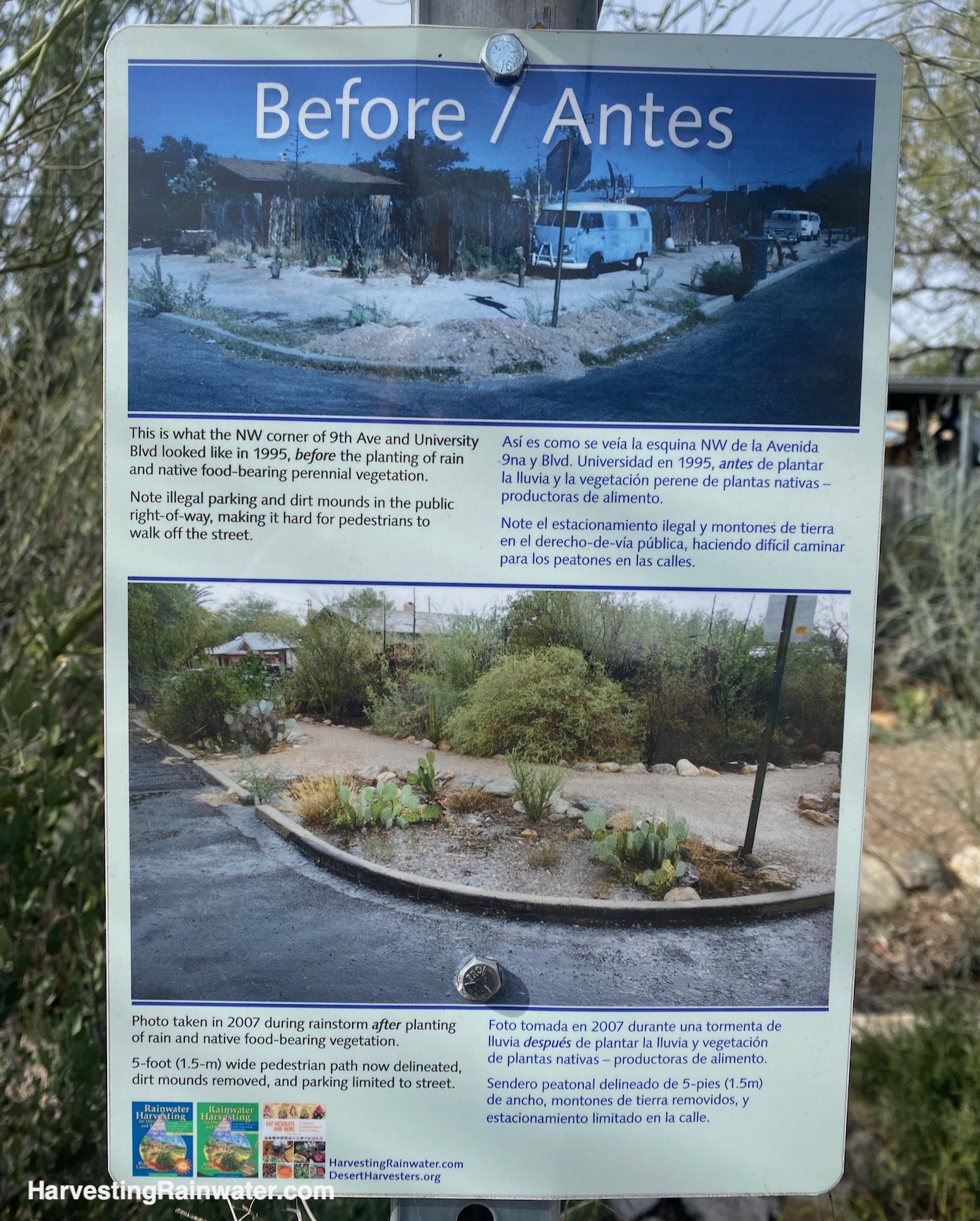
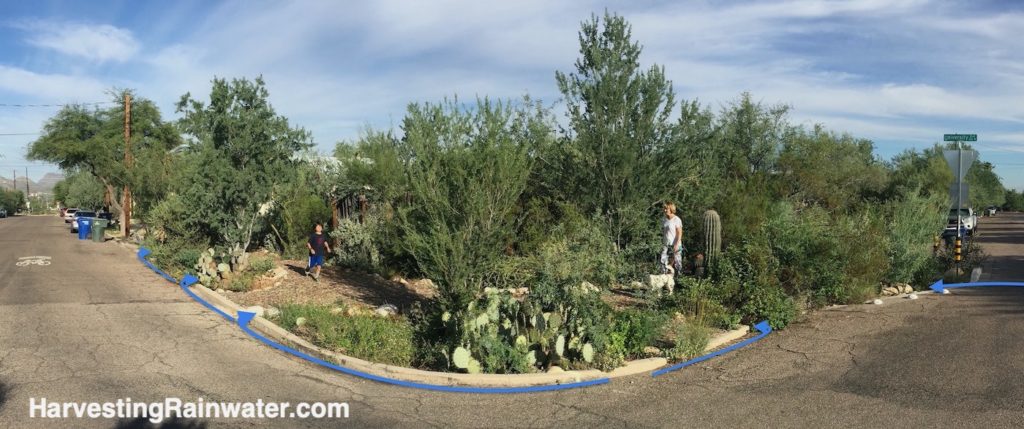
Blue arrows denote water flow, and how we divert street runoff into street-side basins.
The before sign is posted on the traffic sign post on right side of photo. That way we use existing sign posts to reduce costs and consumption.
Comparing to before / antes photo you can see how we were able to switch from a stop sign to a yield sign thanks to water-harvesting, traffic-calming strategies such as the road-narrowing chicane in which the yield sign is located.
Photo: Brad Lancaster
If the interventions/collaborations were successful, they spark us to do likewise, to do more, and/or to evolve further. If not successful, we still learn, and can adapt and change as needed.
Take many before photos before you start, then take many after photos for years
Take multiple photos from multiple perspectives before you start you work, so you’ll have many to contrast with future perspectives. You never know which perspective will turn out to be the most illustrative of what you are trying to convey – so many options are great.
Be sure to get reference points in the before photos that will still be present in future photos such as street, street curb, traffic signs, buildings, existing tree(s), horizon/sky, and/or topography such as hill or mountain. These will orient you and the viewer to where in the landscape the photo was taken.
That way you can return to those photo points—the locations where you took the photos—over the years to document change with a continuing series of photos.
It is best to take photos at the same time of day and year each time you return to take photos. That way shadows, light, season, and plant condition (winter dormant or in growing season) will be consistent and you’ll more accurately document change.
Make the signs locally
Contact local sign shops to see what services they offer.
Our signs are aluminum with a vinyl coating.
Make sure you also get a UV-resistant coating so the signs won’t fade too fast in the sun.
And make sure you get the graffiti-resistant coating.
Should your signs get hit with graffiti, it will then be easy to clean off with products like this.
Make the signs multi-lingual
That way they are accessible to more people, and the ideas and understanding spreads further.
More examples
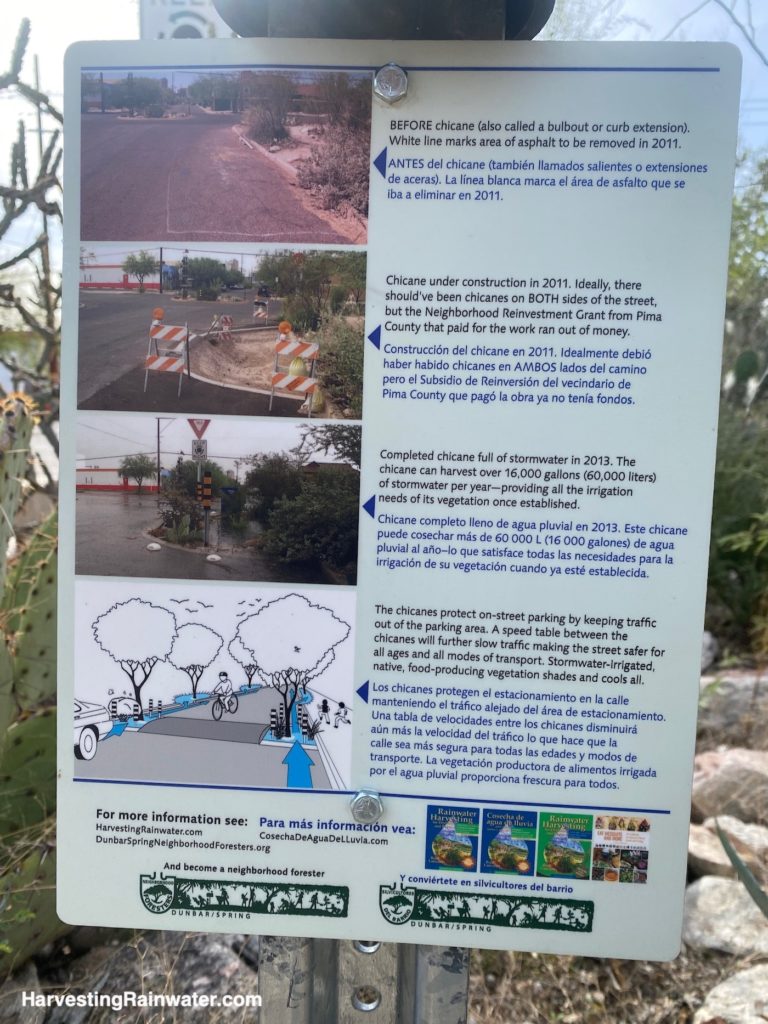
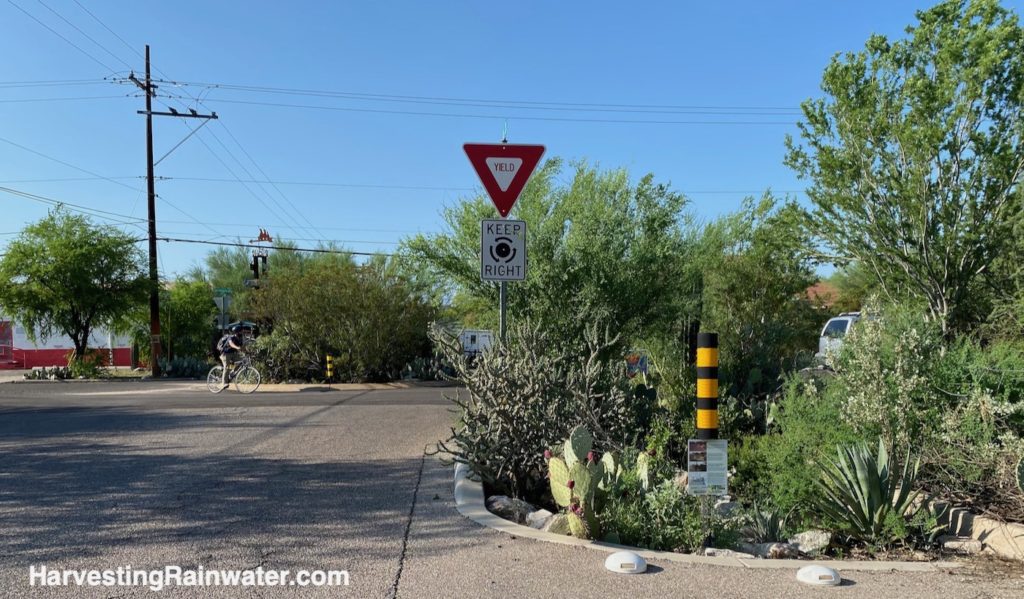
Sign is on the post of the reflective bollard on the edge of the water-harvesting, traffic-calming chicane in the foreground.
To the left of the image in the background is a water-harvesting, traffic-calming round-a-bout.
Photo: Brad Lancaster
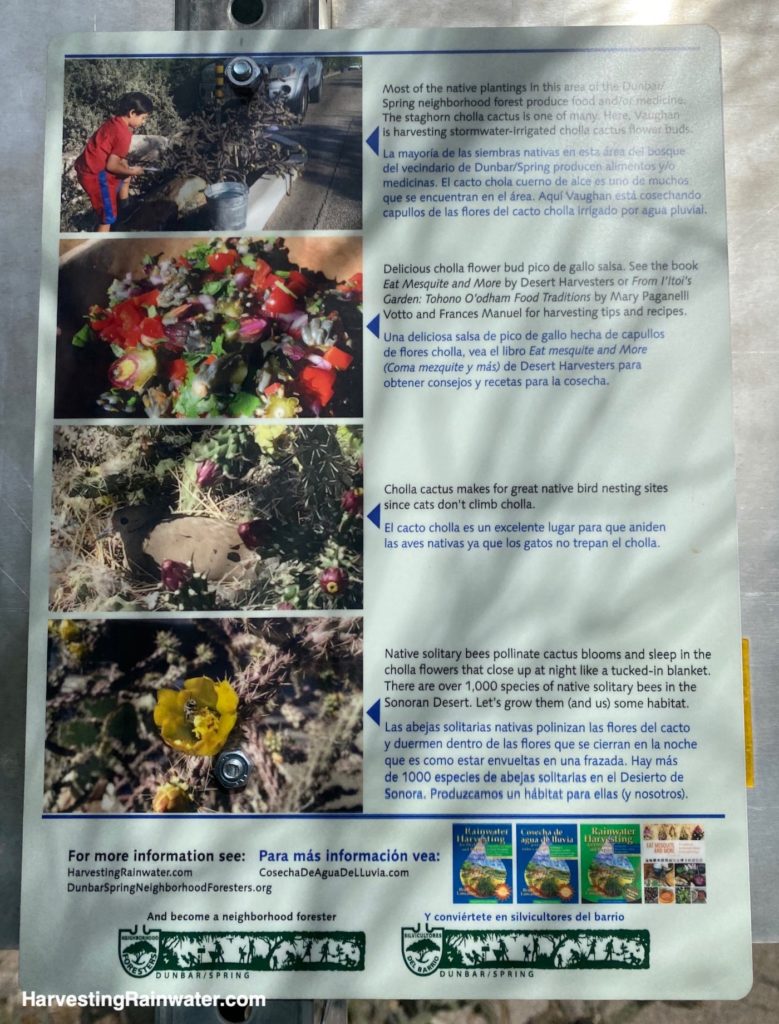
This sign highlights some of the edible and wildlife-habitat-enhancing aspects of the native vegetation within the water-harvesting, traffic-calming chicane.
Photo: Brad Lancaster
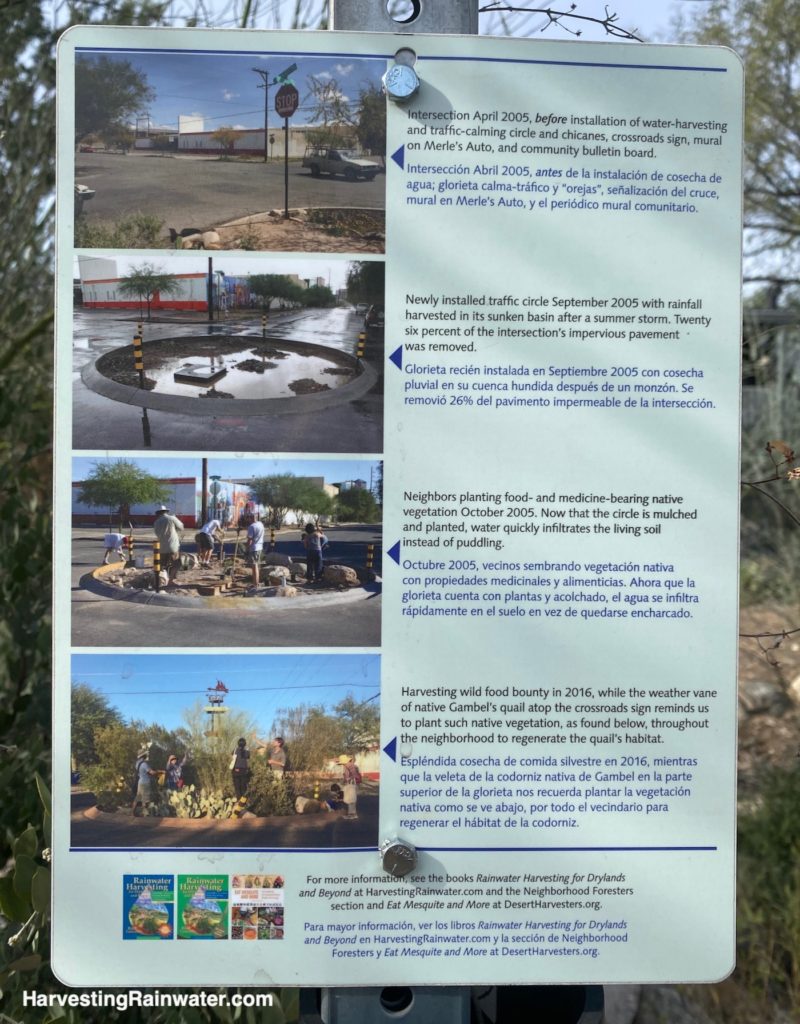
Photo: Brad Lancaster
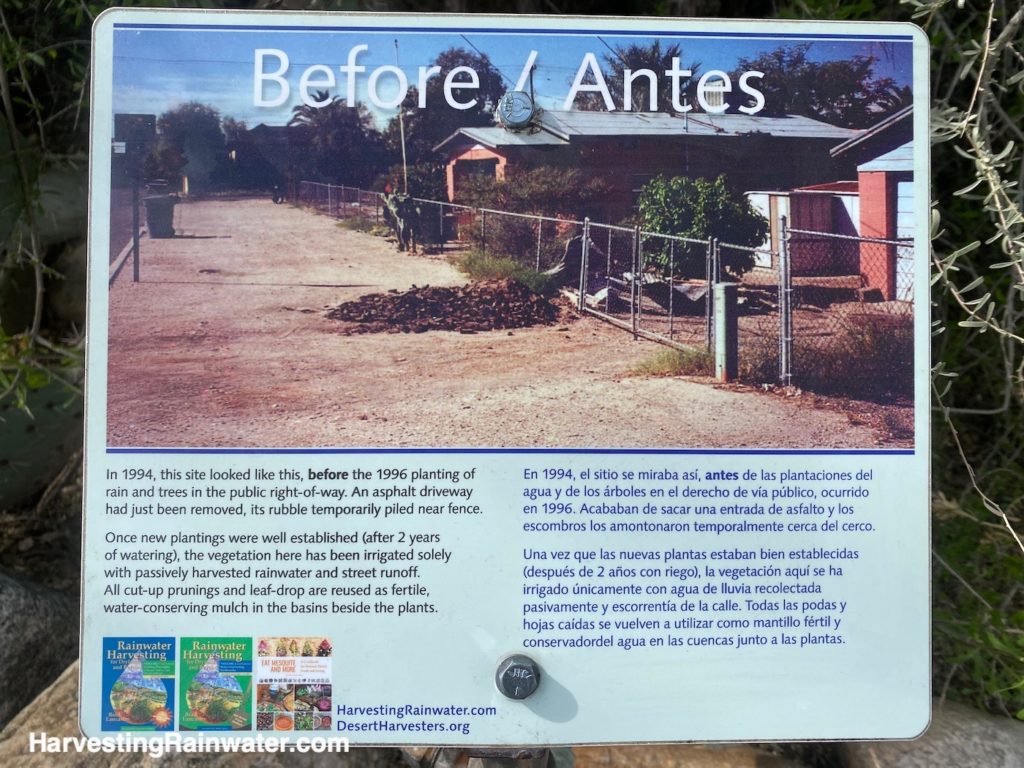
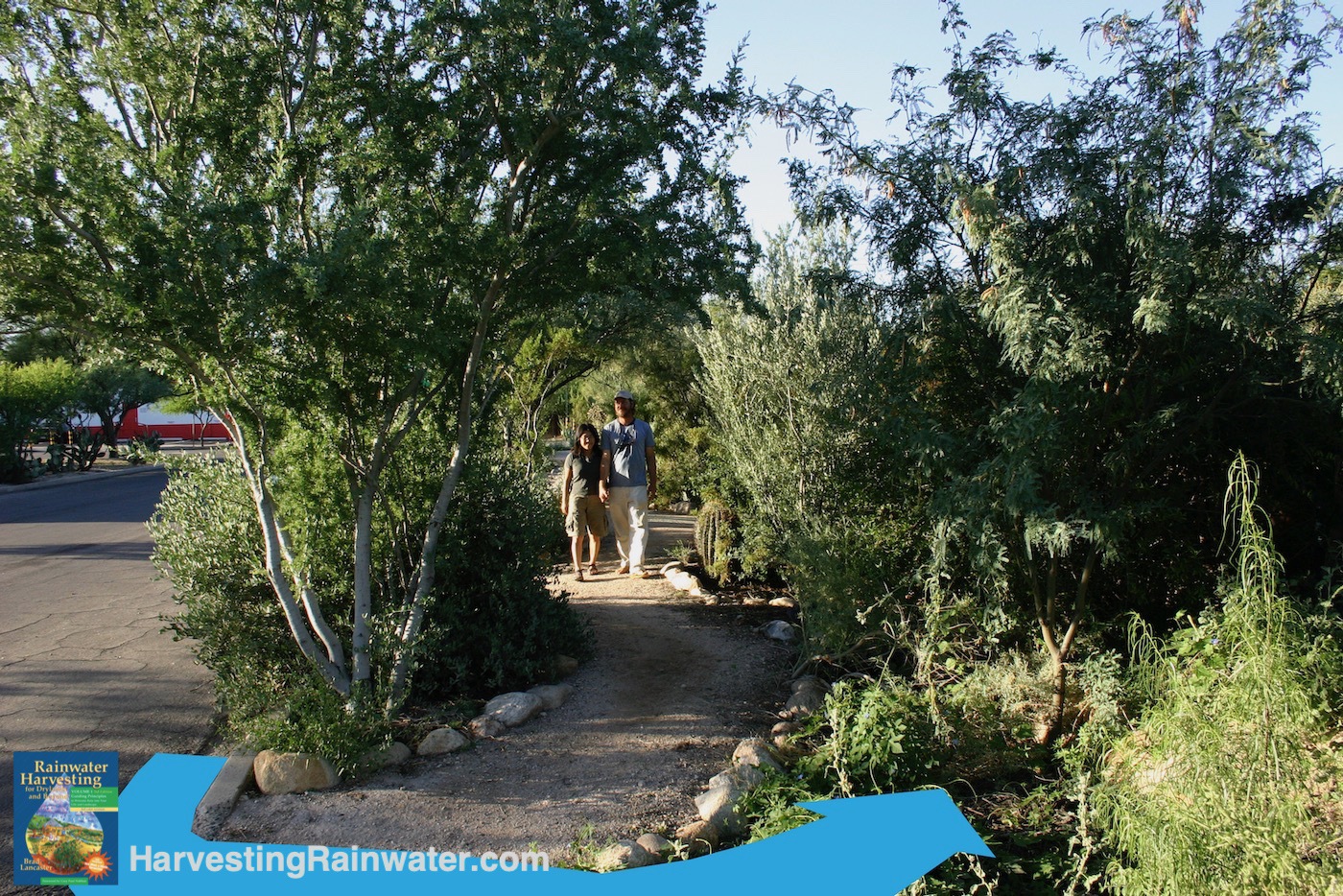
Blue arrow denotes flow of stormwater we harvest from the street.
Photo: Brad Lancaster
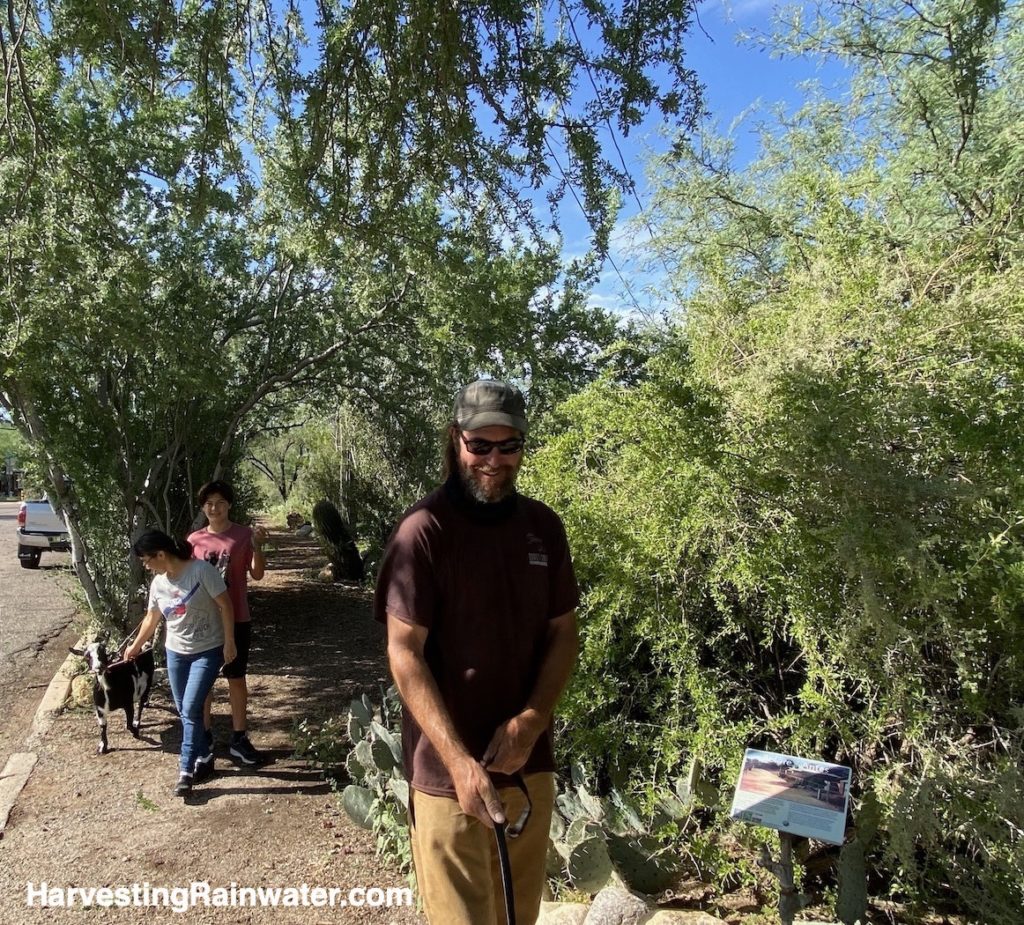
Note before/antes sign in lower right corner.
Friend Allen Reilley made the sign post from the old galvanized plumbing we took out of our house when we redid the plumbing.
Photo: Brad Lancaster
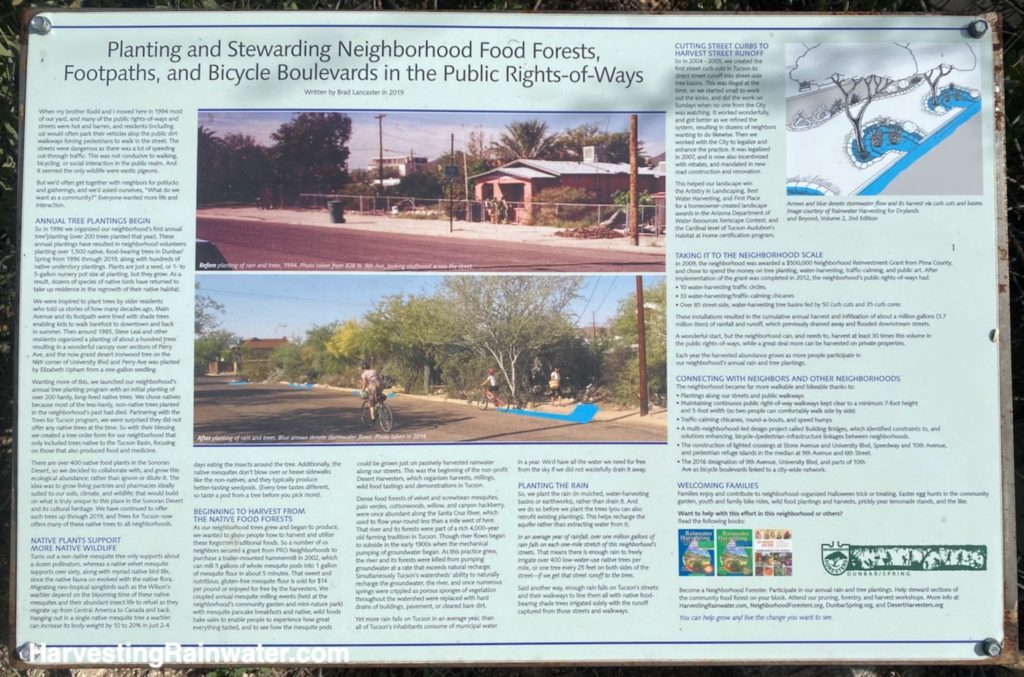
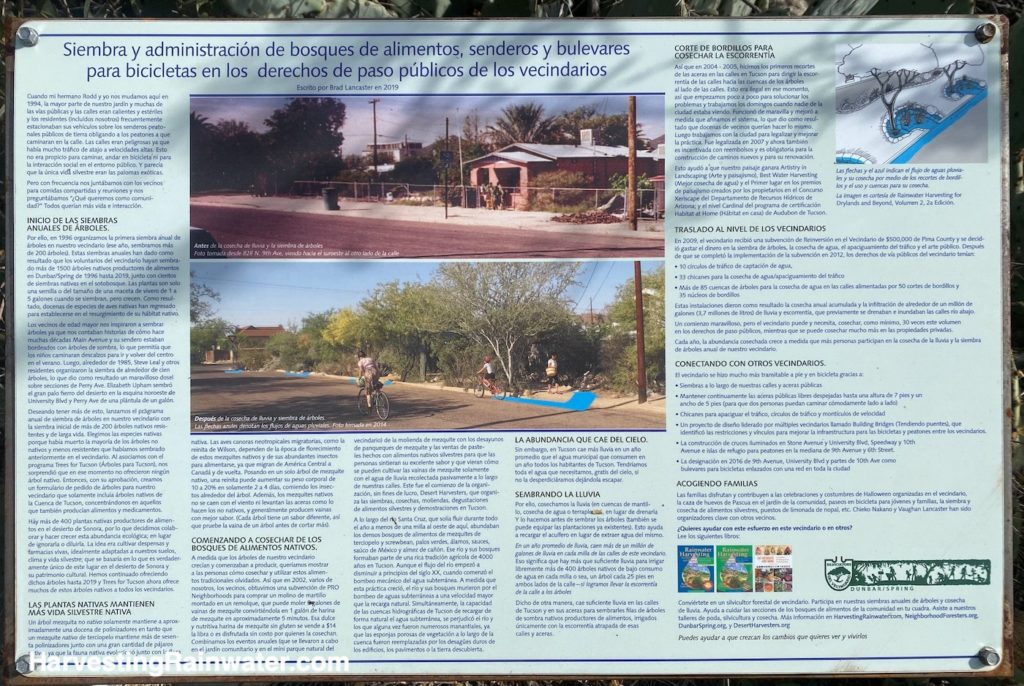
Come see these signs and more in person
They and others are all within a half-block radius of 9th Avenue and University Blvd in Tucson, Arizona.
You’ll also see…
Multi-lingual plant identification signs
See here
For more…
• Check out these before and after photos of green infrastructure in the Dunbar/Spring Neighborhood
• Become a Neighborhood Forester and/or start a Neighborhood Forester group on your block or in your neighborhood.
• Check out my books Rainwater Harvesting for Drylands and Beyond, Volume 1 and Volume 2 available at deep discount, direct from me

Volume 1

